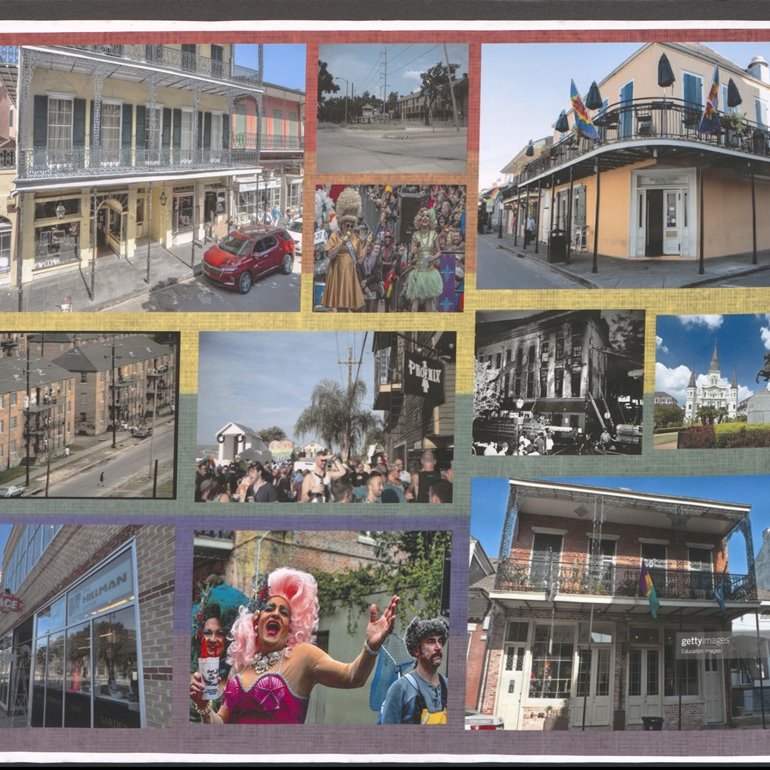Mississippians

Bohemian New Orleans
The queer community in New Orleans, tucked behind the "Lavender Line" where St. Ann bisects Bourbon Street, did not always exist. Instead, it traces its roots back to the bohemian artists who inhabited parts of the French Quarter at the turn of the twentieth century. Mississippi native Tennessee Williams was drawn to the city's nightlife and bohemian artists' relaxed attitude toward sexuality. In 1939, as Williams was beginning to explore sexual relationships with men, he moved to the French Quarter and lived in artist communes along Royal Street; he used his experiences to write pieces like Night of the Iguana and A Street Car Named Desire. The vibrant bohemian community combined with the post-war boom would lead to the growth of the New Orleans queer community in the 1950s.
Carnival, also known as Mardi Gras, is an essential part of the culture in New Orleans and along the Gulf Coast. Mardi Gras celebrations draw from Christian, Cajun, and Acadian cultures. This combination of cultures allowed the New Orleans queer community to celebrate its unique culture within the confines of the city's decency laws regarding sex and drag. During the weeks-long celebration, queers from along the Gulf Coast and nationwide could anonymously descend on the city and participate in the festivities. National trends of gay liberation combined with New Orleanian culture allowed for the open display of sexuality before the city and state changed decency laws.
Mobilization in New Orleans
Like the city, the queer community in New Orleans was shaped by segregation. African Americans were forced to participate in segregated Mardi Gras celebrations and attend bars such as the Golden Feather, located away from the French Quarter. As a result, New Orleans housing projects were crucial locations for the growth of the African American queer community in the city and across the South. The Magnolia, Melpomene, and Calliope Projects were popular with the bounce hip-hop scene. These housing projects produced gay and trans rappers Big Freeda and Katey Red. These artists are part of the sub-genre known as "sissy bounce."
In 1973, New Orleans' queer community was galvanized to political action after the fire at the Upstairs Lounge. The arson attack resulted in the deaths of thirty-two members of the queer community, primarily white gay men. Many of the victims were members of the Metropolitan Community Church. The news of the attack made national headlines and led queer New Orleanians to organize in highly visible public spaces like Bourbon Street and Jackson Square and to harness their financial power by supporting queer-owned businesses. As a result, places like Mary's Ace Hardware, The Phoenix, and Cafe Lafitte have achieved legendary status for locals and tourists alike.
